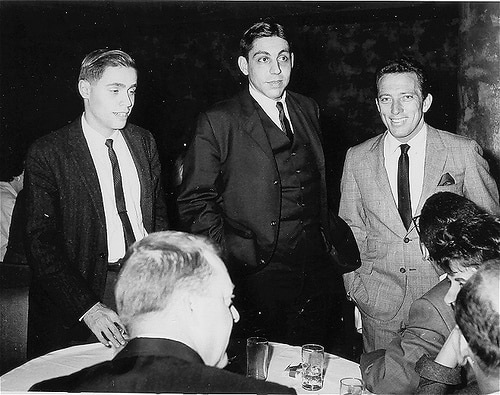
Occasionally at Keener13.com, we talk about the ingredients behind the scenes that so mixed to make WKNR central to the soundtrack of our lives. Today we introduce you to a name that is central to the Keener legend, a name that few listeners may have heard who was crucial to the creation and and success of the station we grew up with.
If there was ever a “Man Behind the Curtain” at WKNR, it was long time Program Director, Frank Maruca. He was the creative brain behind Keener’s transformation and the sales promotion that helped drive revenue. It’s amazing how many of the ideas he espoused are still relevant today. Here are a few:
It isn’t just “Radio”, it’s a sales and marketing machine – Maruca’s background included a stint as sales and marketing director at KYW. The call letters, familiar to many as those of the all-news giant in Philadelphia, were then assigned to a station in Cleveland, Ohio. His broad view of how programming and promotions could serve as a catalyst for client revenue generation helped create a win-win environment for listeners and advertisers that generated legendary ratings and phenomenal cash flow.
Russ White interviewed Maruca for our forthcoming book “Motor City Music – Keener 13 and the Soundtrack of Detroit”. Here are a few nuggets from that conversation
 Begin with research but don’t be afraid to take risks – Maruca said that the Keener team did a lot of market research as the format was being crafted. Motown Records was in its infancy and the demand for R&B was obvious. Many in the ownership group fought the notion, but WKNR’s majority shareholder, the visionary Nellie Knorr, bought in. Keeners first playlists had a distinctive R&B feel. Marvin Gaye, Shirley Ellis, Chubby Checker and the Impressions were interspersed with Lesley Gore, Gene Pitney, Lenny Walsh and the Singing Nun. The Kingsmen’s iconic and controversial “Louie Louie” was the first Keener Hit Number One.
Begin with research but don’t be afraid to take risks – Maruca said that the Keener team did a lot of market research as the format was being crafted. Motown Records was in its infancy and the demand for R&B was obvious. Many in the ownership group fought the notion, but WKNR’s majority shareholder, the visionary Nellie Knorr, bought in. Keeners first playlists had a distinctive R&B feel. Marvin Gaye, Shirley Ellis, Chubby Checker and the Impressions were interspersed with Lesley Gore, Gene Pitney, Lenny Walsh and the Singing Nun. The Kingsmen’s iconic and controversial “Louie Louie” was the first Keener Hit Number One.
Hire with care and give your talent some elbow room – Maruca was able to attract some extraordinary talent to ply their trade in Detroit. All-stars like Mort Crowley, Frank “Swingin” Sweeney, Dick Purtan, Bob Green, Scott Regen, Gary Stevens, Robin Seymour and Jerry Goodwin became familiar voices to loyal listeners. Even though Keener adhered to a tight playlist and focused on exacting execution, the talent was given “intelligent flexibility” to create ideas on the fly. Dick Purtan’s Mary Poppins Fan Club, Scott Regen’s Burger Club, Bob Green’s pizza promotion and the compiling clues behind the historic “Paul McCartney Death Rumors” all happened as a result of the pro’s knowing their audience and trusting their gut. Even when the inevitable consultants came into play, the announcers’ judgment often ruled the day.
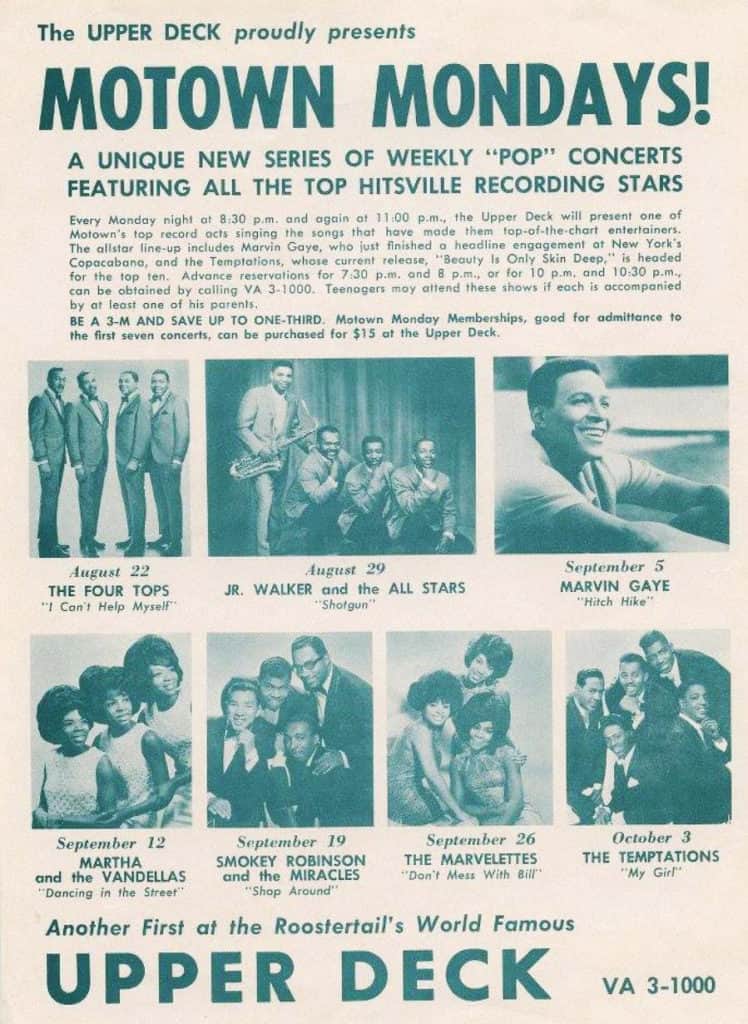 Create mutually beneficial partnerships – Maruca became friends with Berry Gordy while the latter was still working at the local Ford plant. Out of that friendship came creative partnerships that included the “Motown Monday” shows at Detroit’s Roostertail Club and unique access to Motown artists in the crucial 6-10PM time slot when DJ Scott Regen was connecting with the teenage audience. When Stevie Wonder released “Uptight”, it debuted, with the artist in studio singing along, on Keener.
Create mutually beneficial partnerships – Maruca became friends with Berry Gordy while the latter was still working at the local Ford plant. Out of that friendship came creative partnerships that included the “Motown Monday” shows at Detroit’s Roostertail Club and unique access to Motown artists in the crucial 6-10PM time slot when DJ Scott Regen was connecting with the teenage audience. When Stevie Wonder released “Uptight”, it debuted, with the artist in studio singing along, on Keener.
Go where your audience lives and build relationships there – Maruca came up with a creative way to get the word out about Keener’s forthcoming transformation to the indispensible teen audience. “Two weeks before we went on the air with the Keener brand,” he remembers, “We had a press conference and invited all the high school newspapers to attend. So we got written up in just about every high school newspaper in the 3-county area. That’s the trick in all of marketing, not just radio: give the consumers something they want and then find a way to wrap your arms around that so they don’t forget you.”
 Help your advertisers get rich and you’ll get rich, too – Incredibly, no station had effectively tapped the power of the auto industry culture in Detroit. Maruca became friends with John DeLorean, who was developing the GTO for Pontiac. And Keener became the first station to give the new muscle car away as a prize. The contest drove hundreds of listeners to showrooms and supercharged auto sales across the board.
Help your advertisers get rich and you’ll get rich, too – Incredibly, no station had effectively tapped the power of the auto industry culture in Detroit. Maruca became friends with John DeLorean, who was developing the GTO for Pontiac. And Keener became the first station to give the new muscle car away as a prize. The contest drove hundreds of listeners to showrooms and supercharged auto sales across the board.
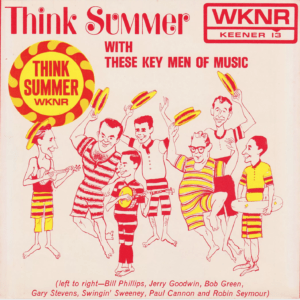 “IBM was using the word think in their advertising in the 60’s,” Maruca said. “I took that and added the word summer to make Think Summer and put up 50 billboards all around the city in February. They said ‘Think Summer: A Community Service of WKNR.’ And we got editorials in the local papers about what a wonderful thing we had done and what a positive feeling the promotion created. The churches were even preaching sermons about Think Summer because it was so positive. Columbia Records heard about it and wrote a song for us called Think Summer, recorded by Susan Wayne. We got all this tremendous feedback from the newspapers, and I took it one step further. I gave every new car dealer in the 3-county area a Think Summer package that included big window banners: ‘Think Summer, Buy Your New Car Now.’ The dealers went crazy! One dealer called me one day and said he had just dumped 2 tons of sand in his showroom and wanted to know where he could get 3 palm trees.”
“IBM was using the word think in their advertising in the 60’s,” Maruca said. “I took that and added the word summer to make Think Summer and put up 50 billboards all around the city in February. They said ‘Think Summer: A Community Service of WKNR.’ And we got editorials in the local papers about what a wonderful thing we had done and what a positive feeling the promotion created. The churches were even preaching sermons about Think Summer because it was so positive. Columbia Records heard about it and wrote a song for us called Think Summer, recorded by Susan Wayne. We got all this tremendous feedback from the newspapers, and I took it one step further. I gave every new car dealer in the 3-county area a Think Summer package that included big window banners: ‘Think Summer, Buy Your New Car Now.’ The dealers went crazy! One dealer called me one day and said he had just dumped 2 tons of sand in his showroom and wanted to know where he could get 3 palm trees.”
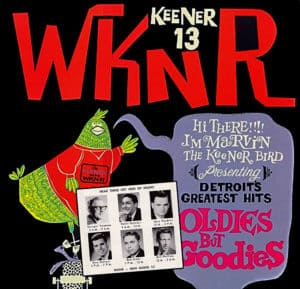 Always give back to the community – Keener’s air staff connected their professional brands with charitable work. Mid-day host, Jerry Goodwin raised over $1 million in 2018 dollars for Danny Thomas’ ALSAC charities.
Always give back to the community – Keener’s air staff connected their professional brands with charitable work. Mid-day host, Jerry Goodwin raised over $1 million in 2018 dollars for Danny Thomas’ ALSAC charities.
Maruca noted that WKNR, “..produced an oldies but goodies album every year and sold it in the record stores and turned all of the proceeds of those albums over to a different charity every year. We would sell 20,000 of those albums in 3 weeks.”
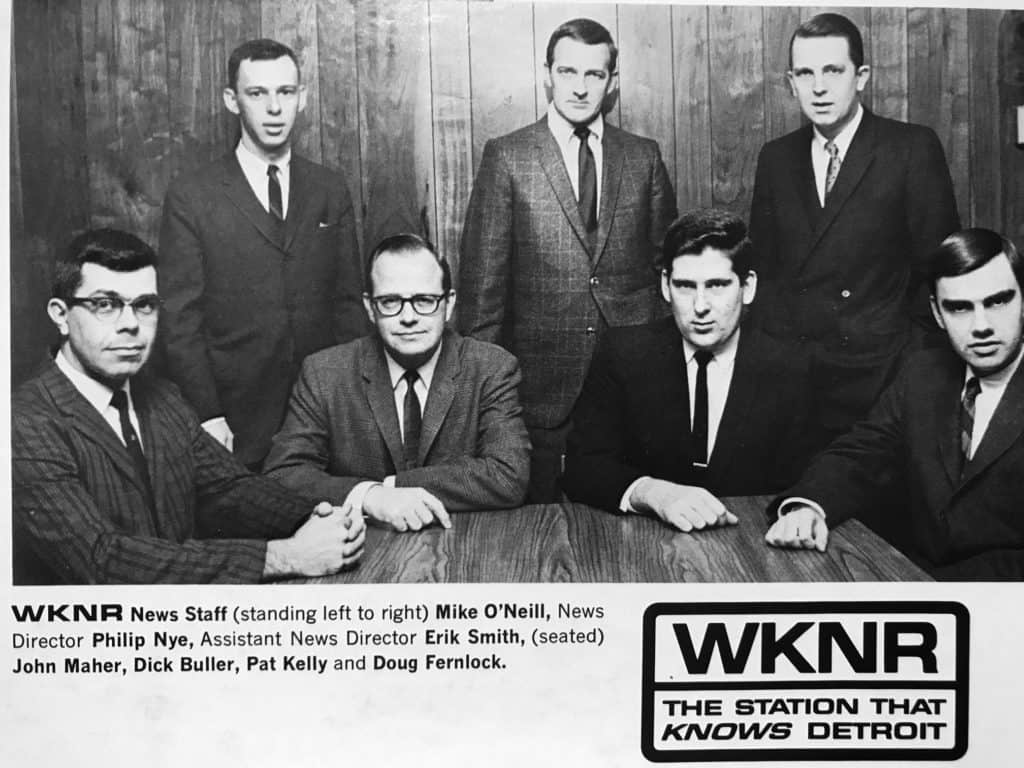 The listener wants more than just music – While the concept of top-40 radio may have been born on top of the radio jukebox idea where music was a centerpiece, Marcua realized that building a strong connection with the community included interpreting the changing cultural landscape in a meaningful way. He hired a seasoned journalist, Philip Nye, as news director and built a full time staff of 8 to cover Detroit. “We won the Associated Press award for best newsroom five years in a row. I had cars equipped with 2-way radios. It sounded like network news. We used a lot of tape. We put good Electro Voice microphones on Sony cassette recorders. And at the end of each year, we would build a news album called ‘Detroit 1965’ or ‘Detroit 1966.’ I had a photographer who took pictures of everything we did and we designed wonderful covers. It was a 60-minute program, 30 minutes on each side, of all the year’s news events in Detroit.” The idea wasn’t to make money, it was to embed the Keener brand into the community. “I sent a box of 25 to every high school in the 3-county area so they could use them in their social studies classes. The schools went crazy over that! We wrapped our arms around the community; that’s how we did it.”
The listener wants more than just music – While the concept of top-40 radio may have been born on top of the radio jukebox idea where music was a centerpiece, Marcua realized that building a strong connection with the community included interpreting the changing cultural landscape in a meaningful way. He hired a seasoned journalist, Philip Nye, as news director and built a full time staff of 8 to cover Detroit. “We won the Associated Press award for best newsroom five years in a row. I had cars equipped with 2-way radios. It sounded like network news. We used a lot of tape. We put good Electro Voice microphones on Sony cassette recorders. And at the end of each year, we would build a news album called ‘Detroit 1965’ or ‘Detroit 1966.’ I had a photographer who took pictures of everything we did and we designed wonderful covers. It was a 60-minute program, 30 minutes on each side, of all the year’s news events in Detroit.” The idea wasn’t to make money, it was to embed the Keener brand into the community. “I sent a box of 25 to every high school in the 3-county area so they could use them in their social studies classes. The schools went crazy over that! We wrapped our arms around the community; that’s how we did it.”
Associate advertisers with every dimension of your brand in a creative way – Keener’s music guides were a huge hit and became a popular advertising vehicle, too.
“We surveyed record sales in 75 record stores every week. The reason we surveyed so many is that Detroit was known to have 5 percent of the nation’s record sales in those days, and I had to watch out for payola. I needed to be sure record companies weren’t paying off the record stores. That’s why I did 75, to protect us. Then we would print 75,000 copies of the music guide and distribute them every Friday morning to the record stores. I gave the back of it to big advertisers. Nobody had ever thought about that.”
Many of the things that Frank Maruca pioneered became common practice at the more successful hit music stations that emerged in the 1960s. And if you look deeply into some of today’s most successful brands, like Apple, Amazon and Google, you’ll find a bit of Frank Maruca’s magic dust in the mix.

